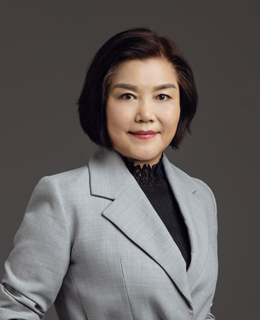
Principal Investigator, Institute of Biophysics, Chinese Academy of Sciences
Director, CAS Engineering Laboratory for Nanozyme
Professor, University of Chinese Academy of Sciences
Education
1978 - 1982 B.Sc., Henan Medical University, China
1989 - 1993 M.D., Microbiology and Immunology, Heidelberg University, Germany
Professional Experience
1983 - 1989 Assistant and Associate, Institute of Biophysics, Chinese Academy of Sciences
1994 - 1996 Post-Doc, Immunology, Memorial Sloan-Kettering Cancer Center, U.S.A
1997 - 2002 Principal Investigator, Institute of Microbiology, Chinese Academy of Sciences
2002 - Principal Investigator, Institute of Biophysics, Chinese Academy of Sciences
Achievements
2015 Member of Chinese Academy of Sciences
2023 Fellow of the World Academy of Sciences (TWAS) for the Advancement of Science in
Developing Countries
2021 Ho Leung Ho Lee (HLHL) Science and Technology Progress Award
2018 Tan Jiazhen Life Science Achievement Award
2017 National Pioneer Innovation Award
2015 Atlas Award by Elsevier
2012 National Prize for Natural Science
2006 - 2016 Vice President & Secretary-General of Chinese Biophysical Society
2015 - 2018 President of Asian Biophysics Association
Nanozymes: Combining the power of chemical catalysis and enzymes
Xiyun Yan
Institute of Biophysics, Chinese Academy of Sciences
Nanozymes are an emerging class of biocatalysts, which is distinct from natural enzymes and traditional artificial enzymes and chemical catalysts. In general, nanozymes are the nanomaterials with intrinsic enzyme-like activities that catalyze enzymatic substrates under physiological conditions, showing similar enzymatic behaviors, kinetics and mechanisms, and can be used as substitutes of enzyme. As a new generation of artificial enzymes, nanozymes perform high stability, high catalytic efficiency, low cost and easy for scale up, compared to natural enzymes. Since 2007 we first reported, there are over 1200 types of nanozymes with the activities covering all the six type of natural enzymes including oxidoreductase, hydrolase, transferase, isomerase, ligase, lyase. Among them, the nanozymes with peroxidase-like and superoxide dismutase-like activities have surpassed their natural counterparts. A wide range of potential applications included in biomedicine, agriculture, green synthesis, environment treatment, because nanozyme with unique characters such as low temperature adaptive catalysis and multi-enzyme cascade reactions which make them different from current enzymes and chemical catalysts. Here, I will specially introduce nanozymes-based catalytical medicine, including nanozyme paper test, tumor diagnosis and catalytic therapy, antioxidant treatment for cardiovascular and cerebrovascular diseases, nanozyme-based antimicrobial treatment against antibiotic resistance. Notably, we found natural nanozymes functioning as antioxidant reagents in living organisms, their potential roles in the origin of life, as well as their potential pathological roles in human diseases, may further inspire future studies of nanozymes as a unique class of biocatalysts.